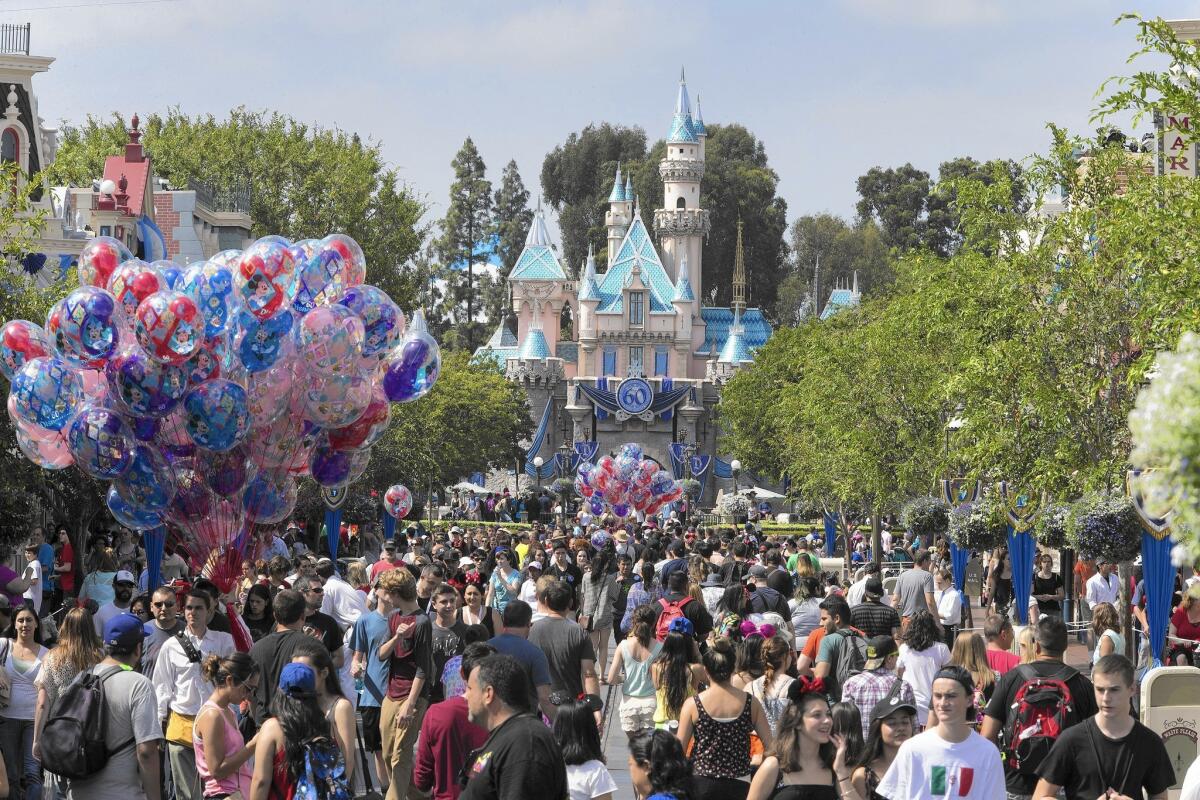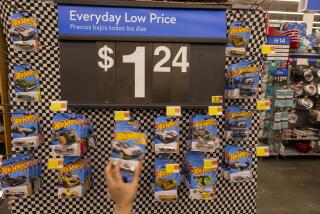Why ‘dynamic’ pricing based on real-time supply and demand is rapidly spreading

Walt Disney Co.’s move to lift prices at Disneyland and its other theme parks on busy days was a novel step for the entertainment giant, but the news made perfect sense to Robert Crandall.
The former chairman of American Airlines employed a version of the same tactic nearly 40 years ago when Crandall pioneered “super-saver” fares, with ticket prices constantly being adjusted based on seat availability, passenger demand and how far in advance customers made reservations.
SIGN UP for the free California Inc. business newsletter >>
What Crandall did then, and what Disney is doing now, is part of what’s called “dynamic” or “surge” pricing, and the practice is rapidly spreading in both the private and public sectors. Prices of baseball-stadium seats and metered parking spaces increasingly are shifting with the up-to-the-minute ebb and flow of supply and demand.
Disney and others took “the same principles we had and applied them to their businesses,” the 80-year-old Crandall, now retired in Florida, said in an interview.
Under Disney’s new policy announced last month, visitors to Disneyland and its other parks pay prices ranging from a 4% discount from regular prices on low-demand days to a 20% increase on the busiest days. Universal Studios Hollywood also has launched a form of dynamic pricing.
They’re hardly alone.
The ride-sharing services Uber and Lyft charge higher rates Saturday nights and at other peak times of demand. Sellers on Amazon.com and other e-commerce sites are using dynamic pricing more and more to match their inventories with demand. Prices of toll lanes on Southern California freeways move up and down in tandem with traffic.
“The time has come” for expanded use of rapid price changes to match demand, said Greg Loewen, chief executive of Digonex Technologies Inc., an Indianapolis provider of dynamic-pricing services. “It’s one of the areas where companies, even big ones, have been making [pricing] decisions mostly on gut feel and past practice.”
Why is the pricing approach spreading now, so long after Crandall first used the tactic?
Because advances in computer power, demand-tracking sensors, software with pricing algorithms and other technologies have made it easier for companies and government agencies to forecast how demand for their products and services will change and how quickly.
Crandall had an early advantage because American and other airlines had massive computer-reservation systems at the time, which they could exploit for pricing purposes.
For most other businesses, “until all the pricing data became so computerized it was very difficult to do that,” said Alok Gupta, a professor at the University of Minnesota’s Carlson School of Management who specializes in dynamic pricing.
“No other industry had that real-time information about their inventory,” Gupta said.
Crude examples of dynamic pricing have been around for ages, of course, as anything “on sale” attests. Bars have lower-priced “happy hours” in the early evening. Retailers mark down prices of winter coats to clear space for spring fashions. Auto dealerships are more willing to haggle over prices for existing cars on the lot when the year’s new models are about to arrive.
The stock market is another example; it’s constantly adjusting the price of shares based on changes in demand caused by a company’s actions or economic news.
But it’s easier now for many types of firms to match supplies with demand, nearly in real time, and alter prices accordingly because “as the years have gone by computers have gotten faster and more powerful,” Crandall said. “People have a lot more data.”
That data come in many forms.
Baseball teams take into account the popularity of their opponents, among other factors, to set prices on those dates. Electric utilities know when power use will peak and, in turn, when to offer incentives to users to cut back. The reservation service Priceline.com sets prices for flights and hotel rooms using the latest data on inventories and demand.
Dynamic pricing also varies by the scarcity of what’s being sold. There’s only one Disneyland, even if there are other entertainment choices, while there are many places to buy a pair of jeans.
So when a consumer considers whether to pay more for Disneyland on a busy day, “you can take it or leave it but there’s no other alternative” to that experience, said Victor Rosenman, chief executive of Feedvisor, an Israeli provider of dynamic-pricing services whose customers include sellers on Amazon.com.
Businesses and government agencies weighing dynamic pricing have to consider whether there will be a consumer backlash to higher prices which, in turn, could depress demand.
Uber, for example, has drawn loud public protests at times when its surge pricing has gone into effect. It even ran afoul of New York’s price-gouging law when prices rose during Hurricane Sandy, leading to a 2014 agreement to avoid substantial increases during states of emergency or disaster.
Retailers run a risk when prices of goods at their physical stores are higher than on their online sites.
“When we talk with prospective clients, one of the first things they want to know is whether this will create the risk of alienating customers,” Digonex’s Loewen said.
At the minimum, consumers want “transparency about what the prices are” and why they change, he said. “They want to make an informed choice and have some sense of fairness to the rules.”
That said, “consumers are getting more used” to dynamic pricing because it’s becoming so prevalent, Rosenman said.
And more applications are coming.
“By far attractions are the busiest area right now,” Loewen said. “That whole sector is starting to look at the opportunities, such as zoos, museums and aquariums.”
The practice also could spread to golf-course tee times, ski-lift tickets and advertising spots on television, radio and other media outlets, he said.
For Crandall, it’s a satisfying endorsement even if it came four decades after he first exploited American Airlines’ reservation system to better fill unused seats and garner more revenue from last-minute fliers.
“I’ve always been pleased that we were pathfinders” because dynamic pricing “is now becoming very widespread,” Crandall said.
Twitter: @PeltzLATimes
ALSO
Americans think robots will steal jobs, but not theirs
Digital First Media named top early bidder for the Orange County Register
Researchers’ idea will blow you away: 656-foot long blades on wind turbines
More to Read
Inside the business of entertainment
The Wide Shot brings you news, analysis and insights on everything from streaming wars to production — and what it all means for the future.
You may occasionally receive promotional content from the Los Angeles Times.











